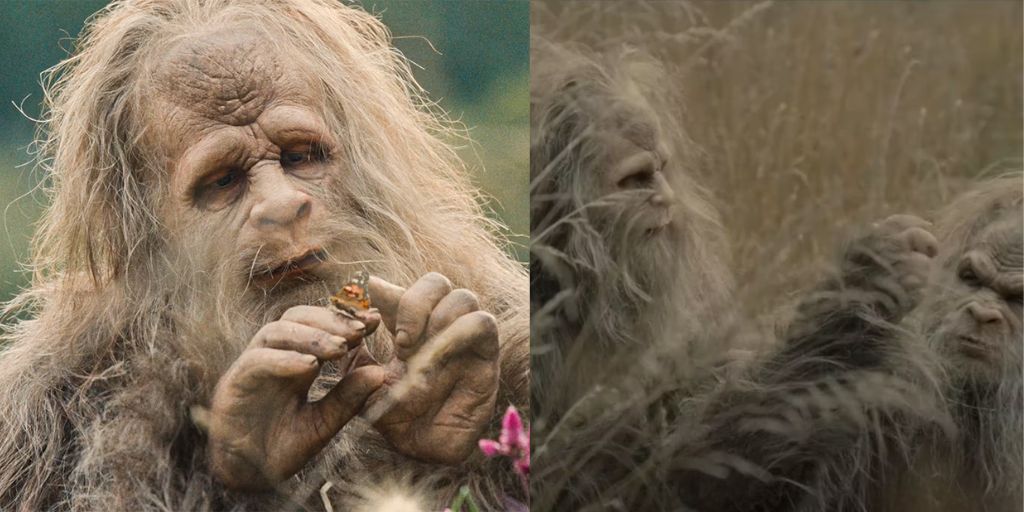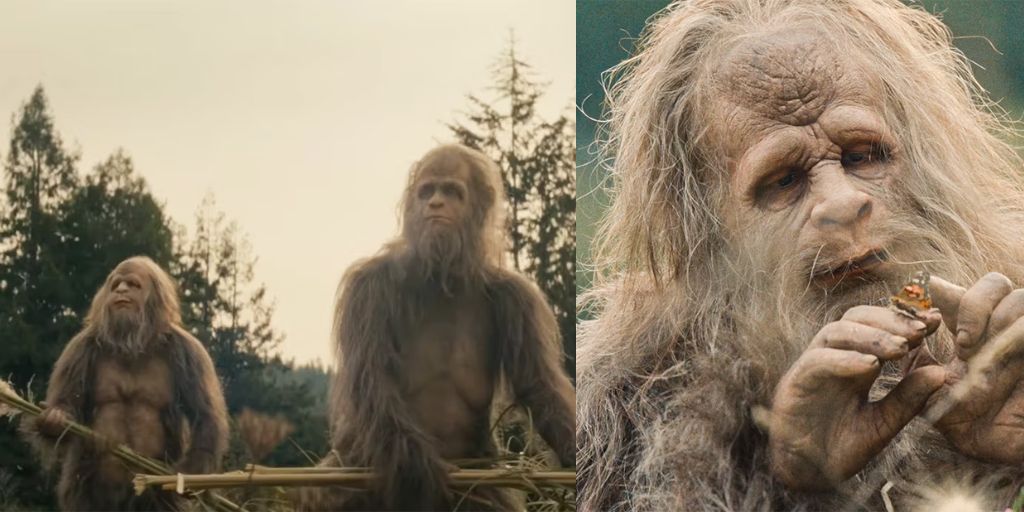For the initial minutes of Sasquatch Sunset from directors Nathan and David Zellner, it’s almost unbelievable that this film exists at all.
The movie opens with four sasquatches wandering through the mountains, engaging in typical activities such as eating plants, displaying excitement, playing with animals, and generally participating in behaviors you might expect from such mythical creatures.
The film sets up a kind of challenge for its viewers—will you stick around to see if there’s more to this experience than just hairy monsters eating, making a mess, and fighting each other in the woods?
Is the film merely repeating a single joke for its entire 90-minute runtime, or is there something deeper and more substantial underneath the surface? By the end of Sasquatch Sunset, many of these questions will likely remain unanswered, with the primary lingering question being, “What on earth did I just watch?”
What Is Sasquatch Sunset About?
Sasquatch Sunset follows the four sasquatches over a year, depicting their journey through mountains and forests. The film chronicles their survival, focusing on their eating habits, frequent bathroom breaks, and various mistakes they make.
The movie is entirely free of dialogue and tends to be quite repetitive, though it includes occasional errors such as eating the wrong types of berries or encountering potentially dangerous situations. The film primarily aims to provide a detailed look into the daily lives of these four sasquatches.
The choice of actors, who are dressed in elaborate costumes and heavy makeup, adds an impressive layer to this unusual concept. It might take most of the film to recognize who is playing which sasquatch.
Jesse Eisenberg and Riley Keough are among the actors portraying squatches, joined by Nathan Zellner and Christophe Zajac-Denek.
Each sasquatch character has a distinct personality—Eisenberg’s character struggles with counting, Zajac-Denek’s pretends to converse with his hand, Zellner’s embraces his primal urges and shows new activities, and Keough’s character has a peculiar habit of scratching and smelling herself.

The actors’ commitment to their roles is striking. Despite the grunts and other noises they make, it’s not immediately apparent which sasquatch is played by Eisenberg, known from The Social Network. The film takes its concept seriously, even with its humor revolving around bodily functions. The straightforwardness of the film’s approach is noteworthy.
The Zellner Brothers Are No Strangers to Wild Ideas
Sasquatch Sunset is the latest inventive project from the Zellner brothers, renowned for their creative reinterpretations of classic Western themes in Damsel and directing episodes of The Curse.
David Zellner’s Kumiko, the Treasure Hunter, which helped him gain prominence, offered a unique twist on the Coen brothers’ Fargo. The Zellner brothers are known for their bold and high-concept ideas, and Sasquatch Sunset continues this tradition.
From a technical standpoint, Sasquatch Sunset is visually striking, resembling a nature documentary capturing four sasquatches in their natural environment.
The cinematography by Mike Gioulakis, who is known for his work on Us, It Follows, and The Eyes of Tammy Faye ensures that every shot is beautifully crafted, even as the film takes absurd turns. The Zellners’ meticulous approach to presenting the concept, combined with Gioulakis’ stunning visuals, lends a sense of authenticity to an otherwise unconventional idea.
The Ideas in Sasquatch Sunset Don’t Always Work
The film’s central humor, focusing heavily on bodily functions, may not appeal to all viewers. During the Sundance screening, a steady stream of people left at various points throughout the showing, indicating varied reactions.
The film is a prime example of “your mileage may vary,” and it does not concern itself with accommodating every viewer’s taste. It represents a distinctive vision from the Zellners, allowing viewers to leave if they do not find enjoyment in it.
Despite the focus on bodily functions and humor, Sasquatch Sunset carries an earnestness that is hard to overlook. What begins as a seemingly silly concept gradually becomes sympathetic as the squatches face their challenges. The performances, particularly by Keough, add a layer of compassion to their roles.
In terms of performance, Sasquatch Sunset is truly impressive. The actors, hidden behind costumes and dealing with a range of bodily fluids, manage to convey a relatable and engaging story.
The film’s focus on basic interests and absence of dialogue allow the actors’ dedication and the Zellners’ storytelling skills to shine through. The film show themes of life and survival in a way that, despite the bizarre presentation, resonates with viewers on an unexpected level.
Sasquatch Sunset Sticks With You
Months after viewing Sasquatch Sunset, it is not the crude humor that remains memorable but rather the film’s compelling characters and moving narrative. Despite its gimmicky aspects, the film succeeds in creating characters that evoke genuine interest and empathy.
The Zellner brothers push the boundaries of traditional storytelling with this unconventional idea. While the central joke may wear thin over time, the film’s commitment to its concept ensures it works effectively.

Sasquatch Sunset stands out as a bold, original film that succeeds due to the Zellners’ dedication and the cast’s willingness to fully embrace a unique and challenging concept. In Sasquatch Sunset, the Zellner brothers deliver a film that defies conventional storytelling with its unique approach.
By focusing on the daily lives of sasquatches, they create an unconventional yet compelling narrative. The film’s dedication to its concept and the actors’ commitment make it a memorable and thought-provoking experience, despite its unusual humor and style.
Sasquatch Sunset is now available to stream on Paramount+ in the U.S.





